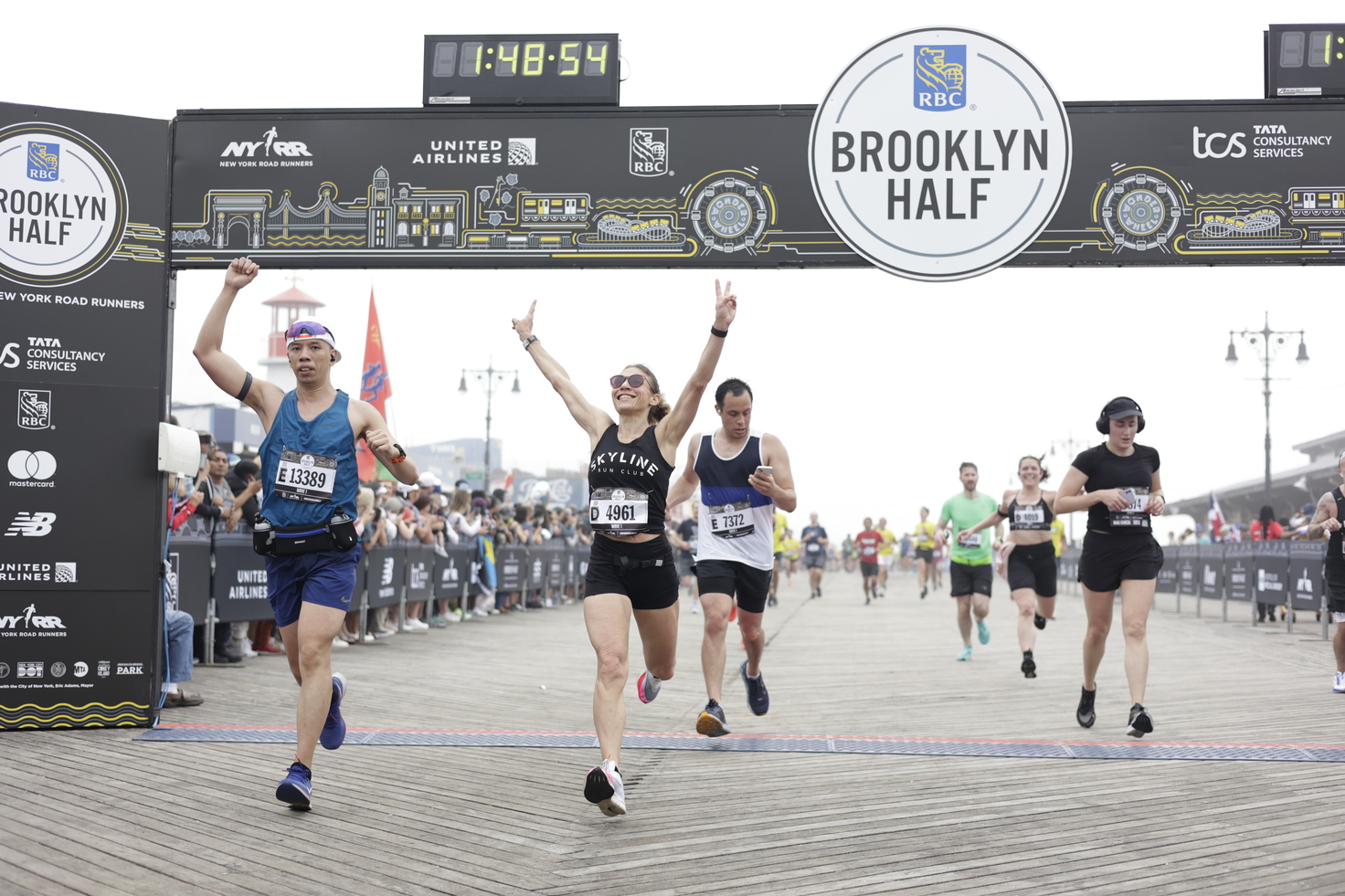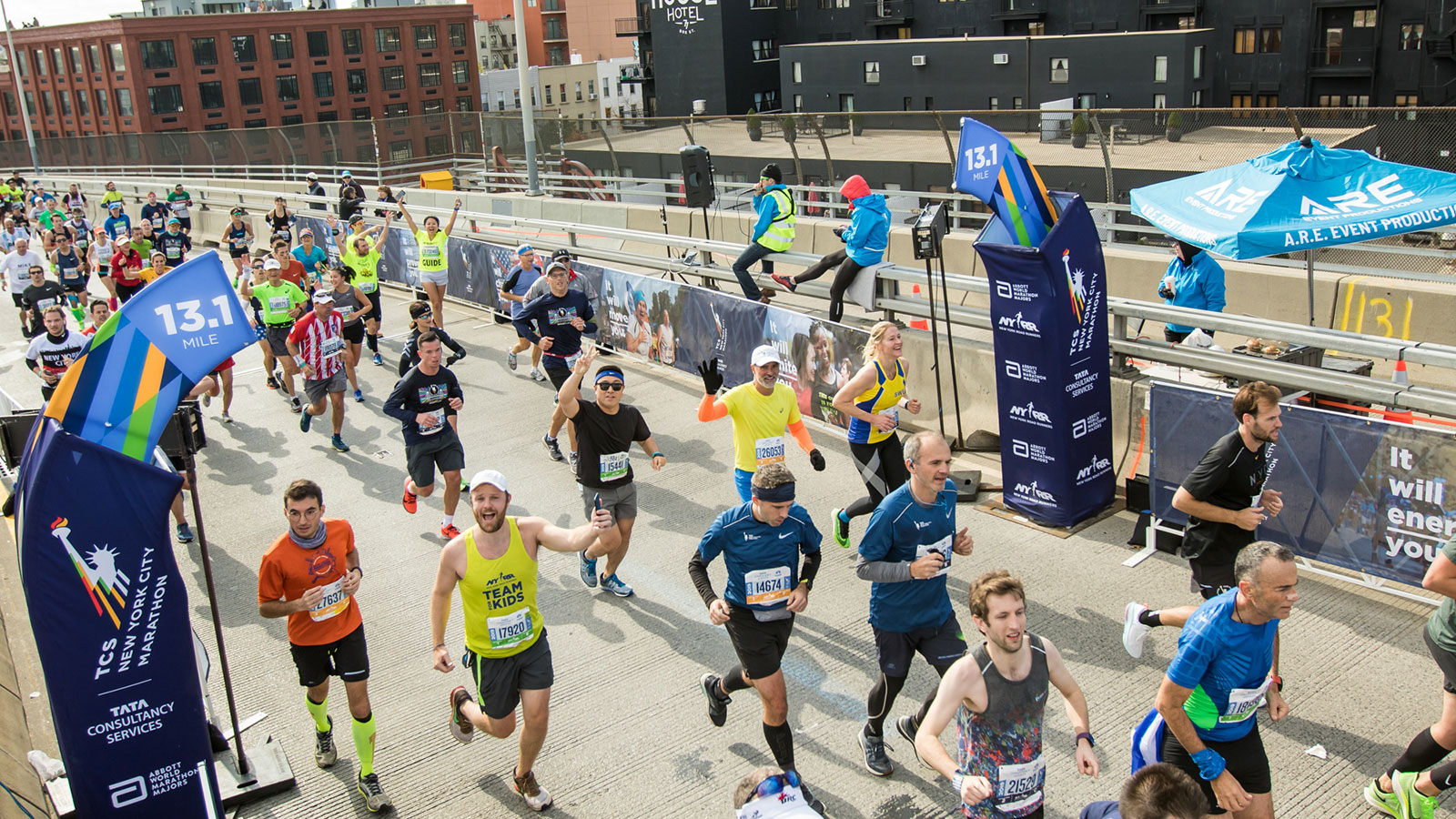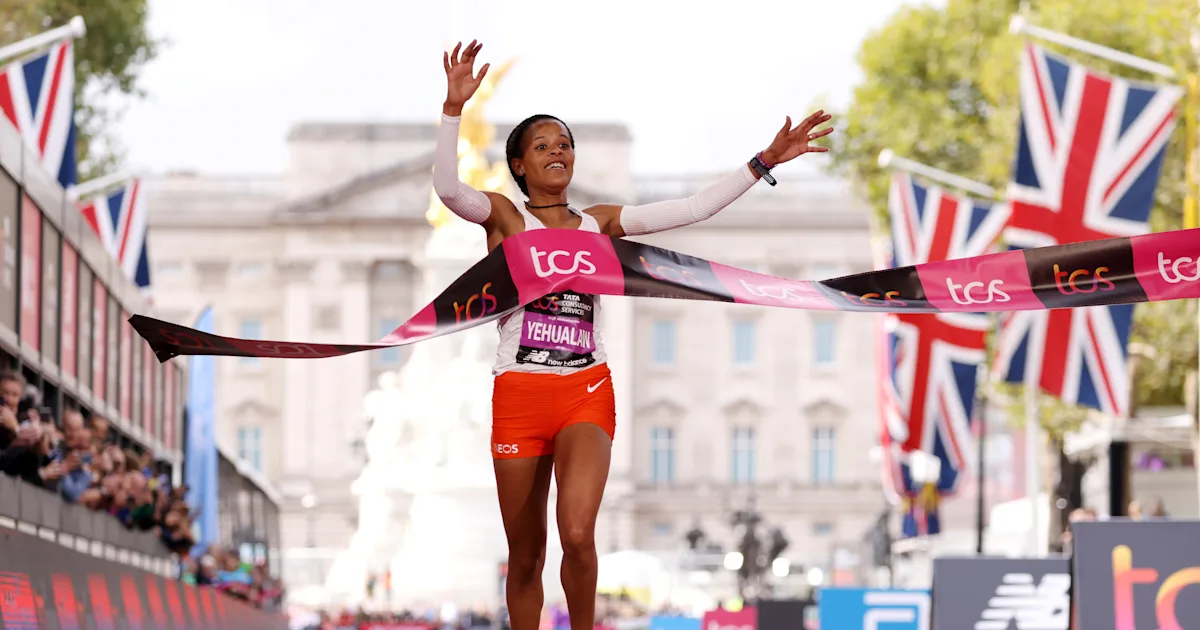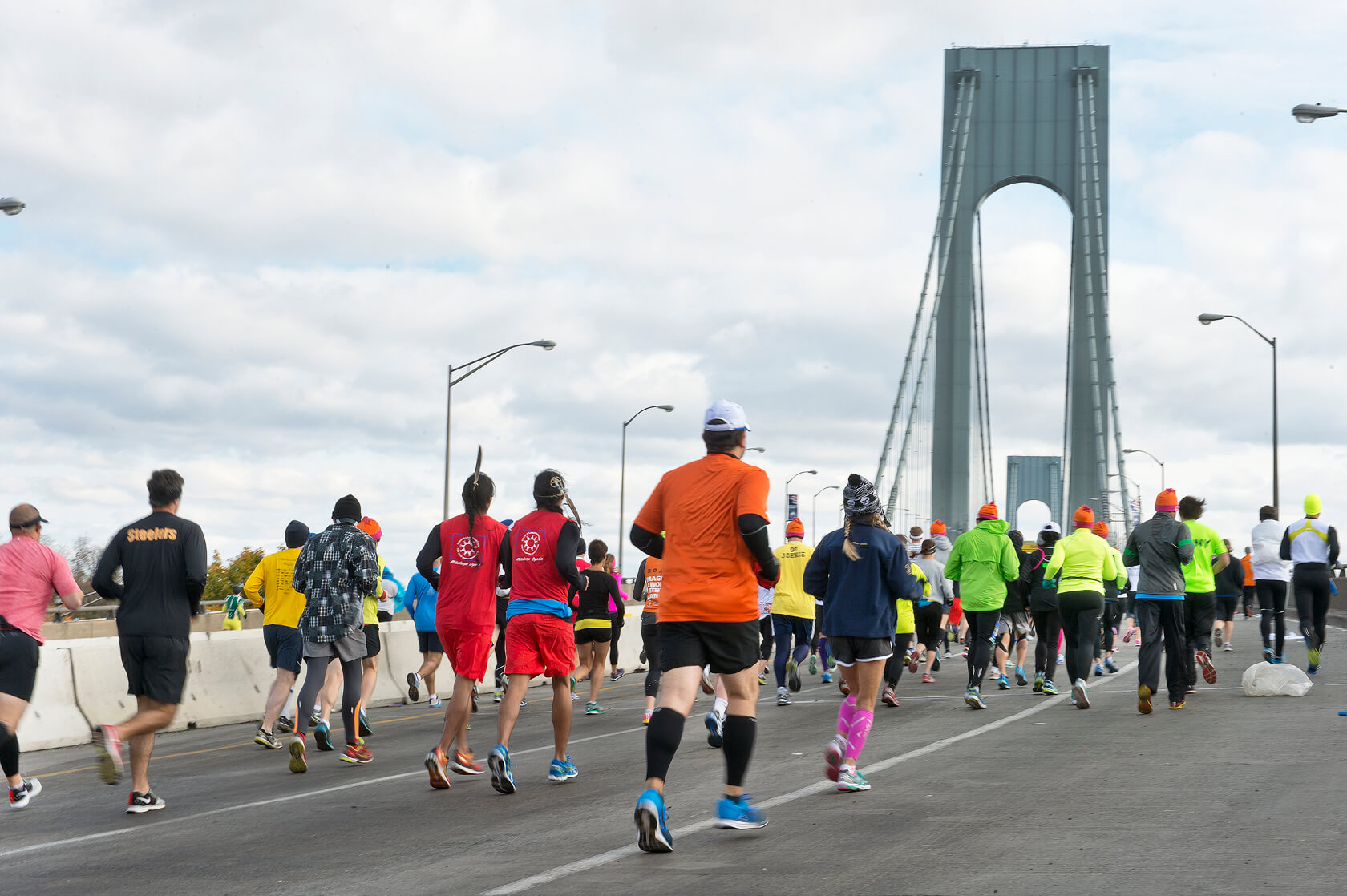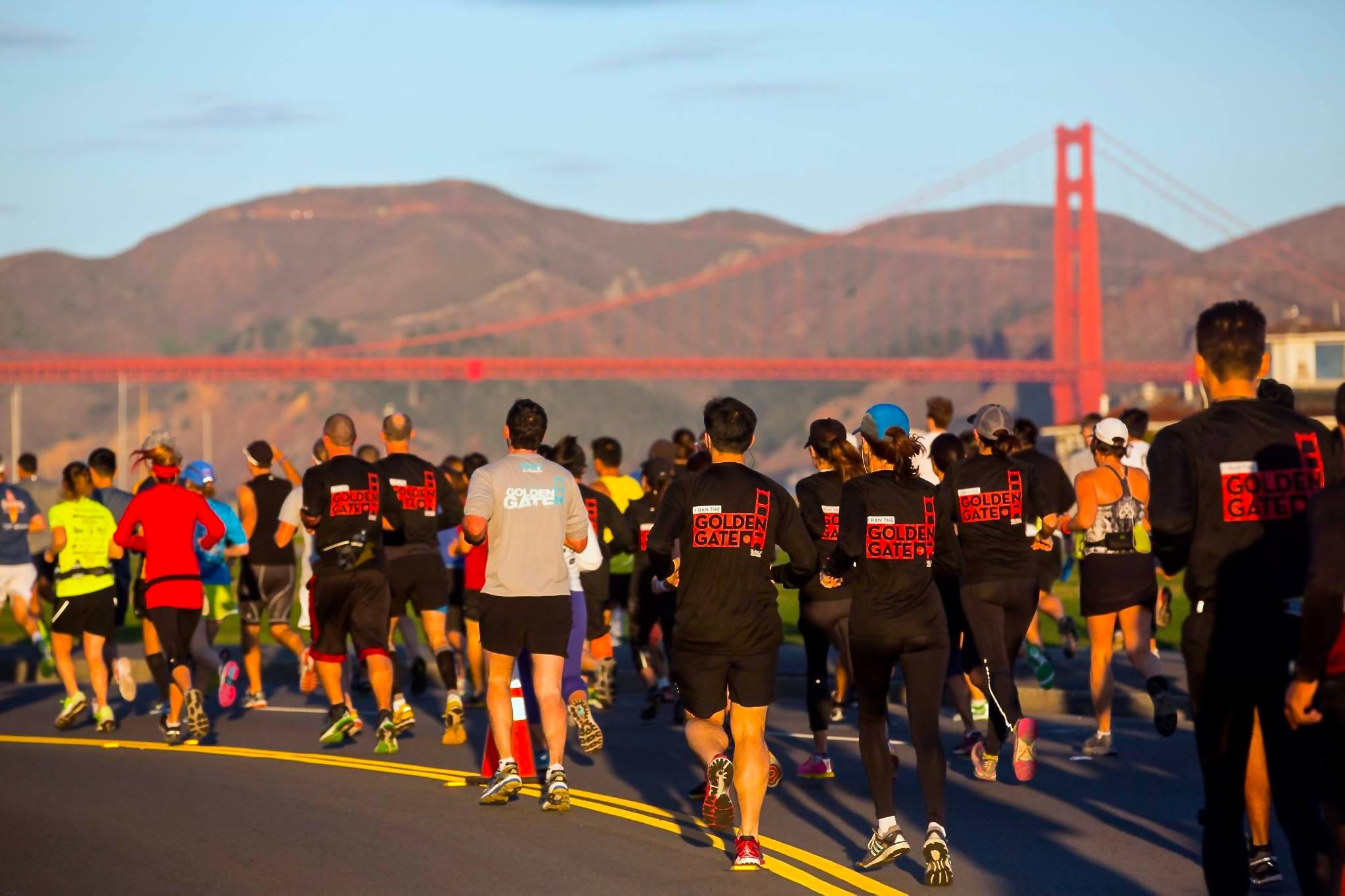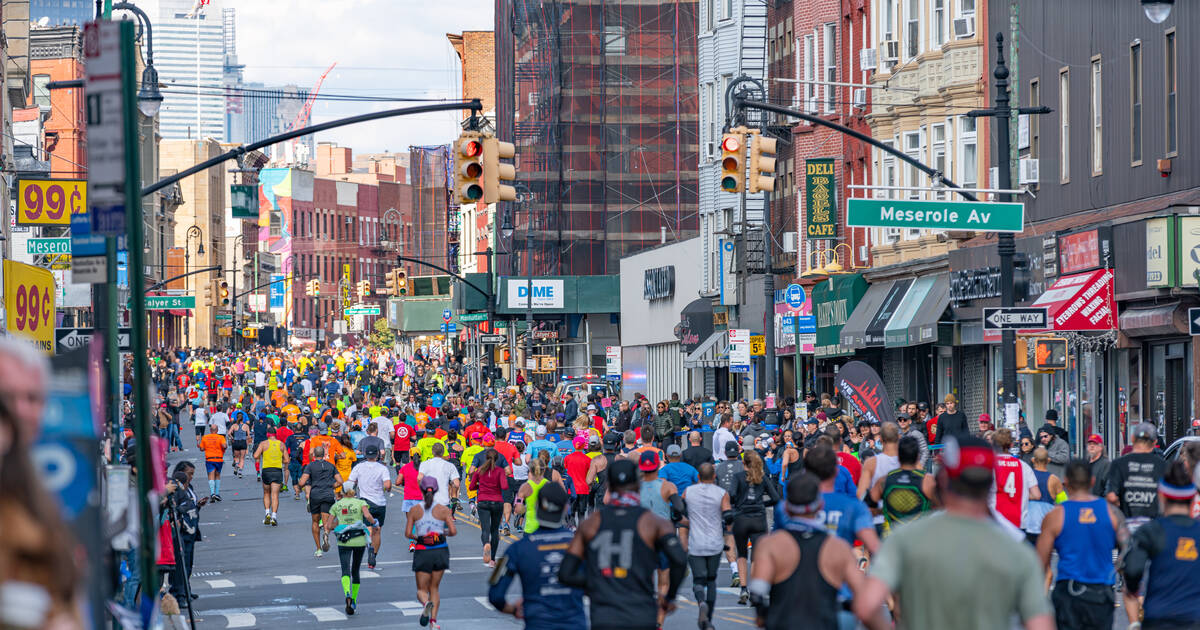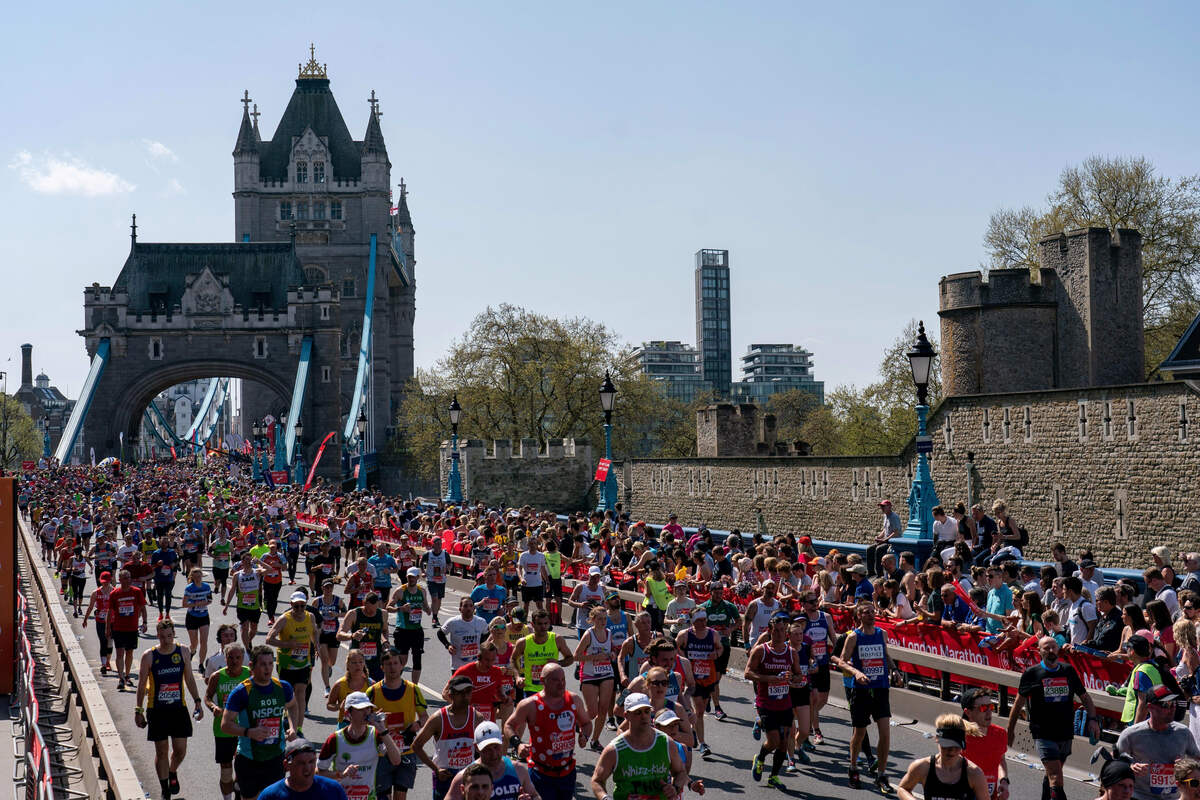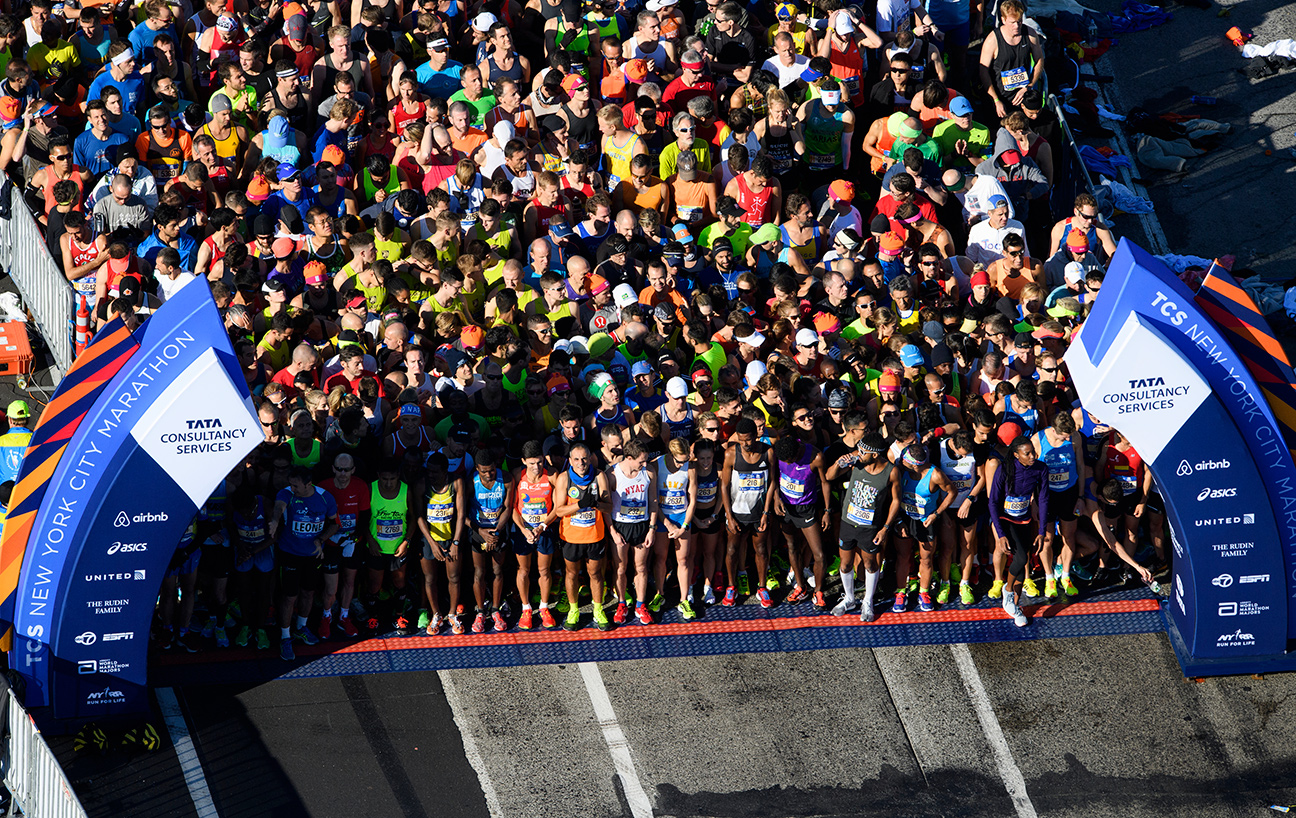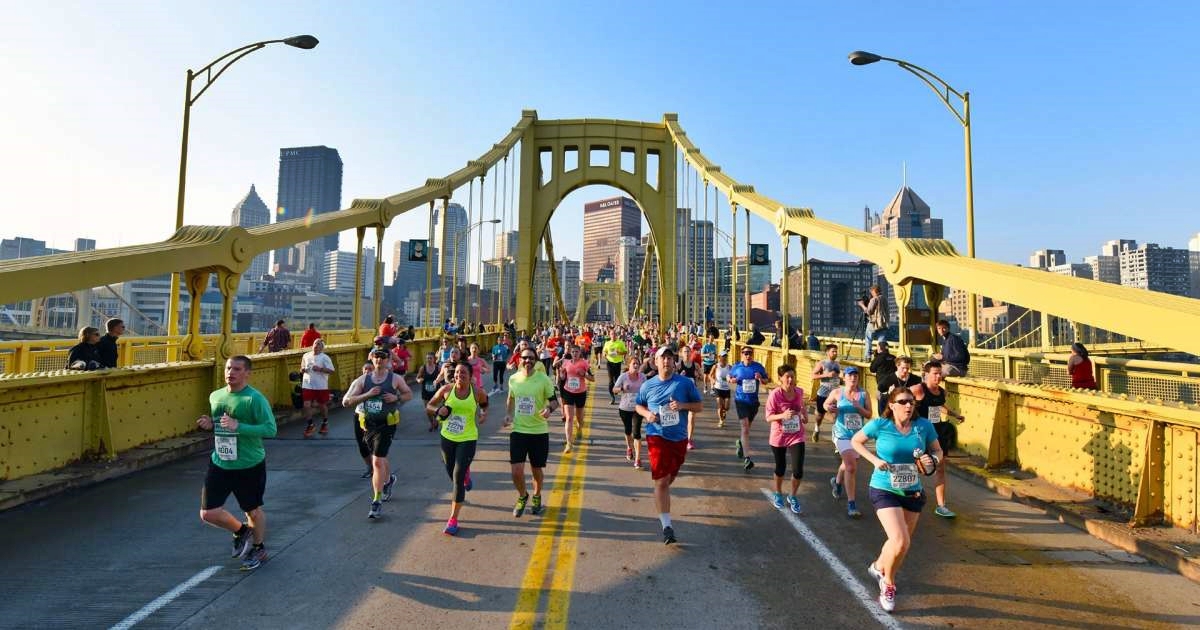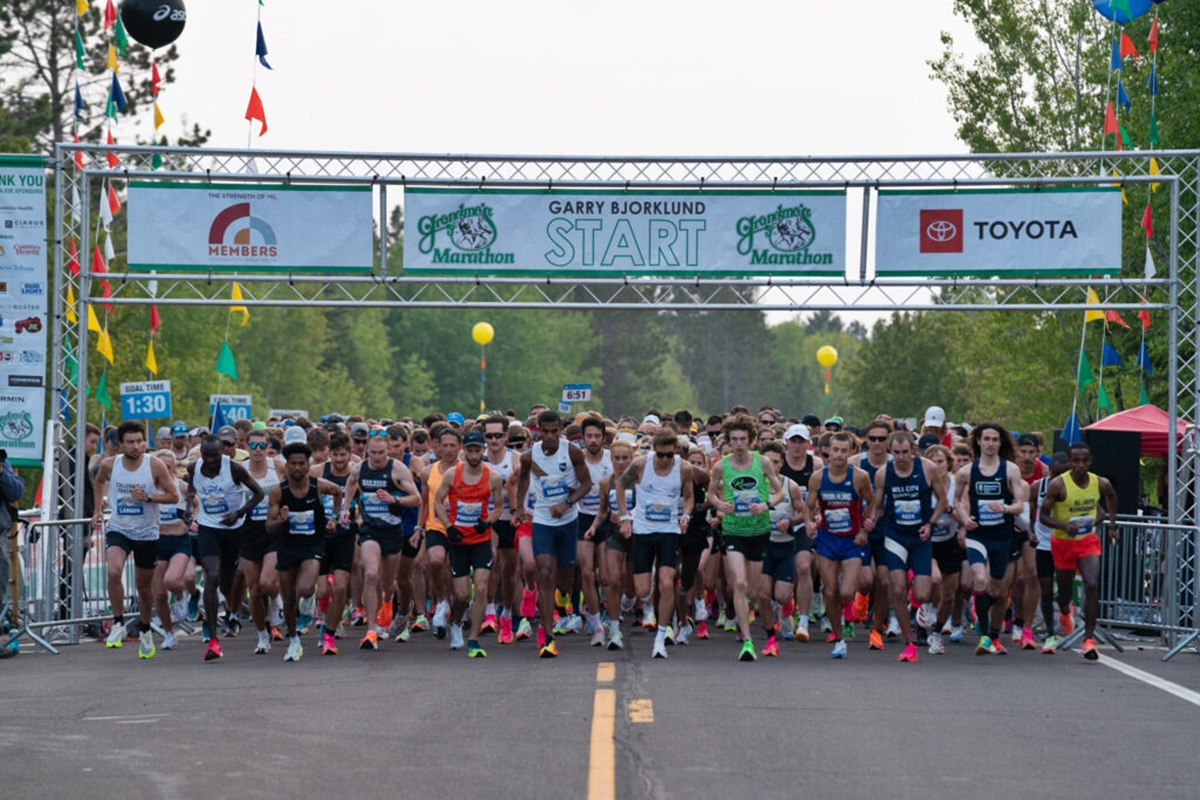Home>Misc>Featured>What Time Does The Verrazano Bridge Closed For Marathon
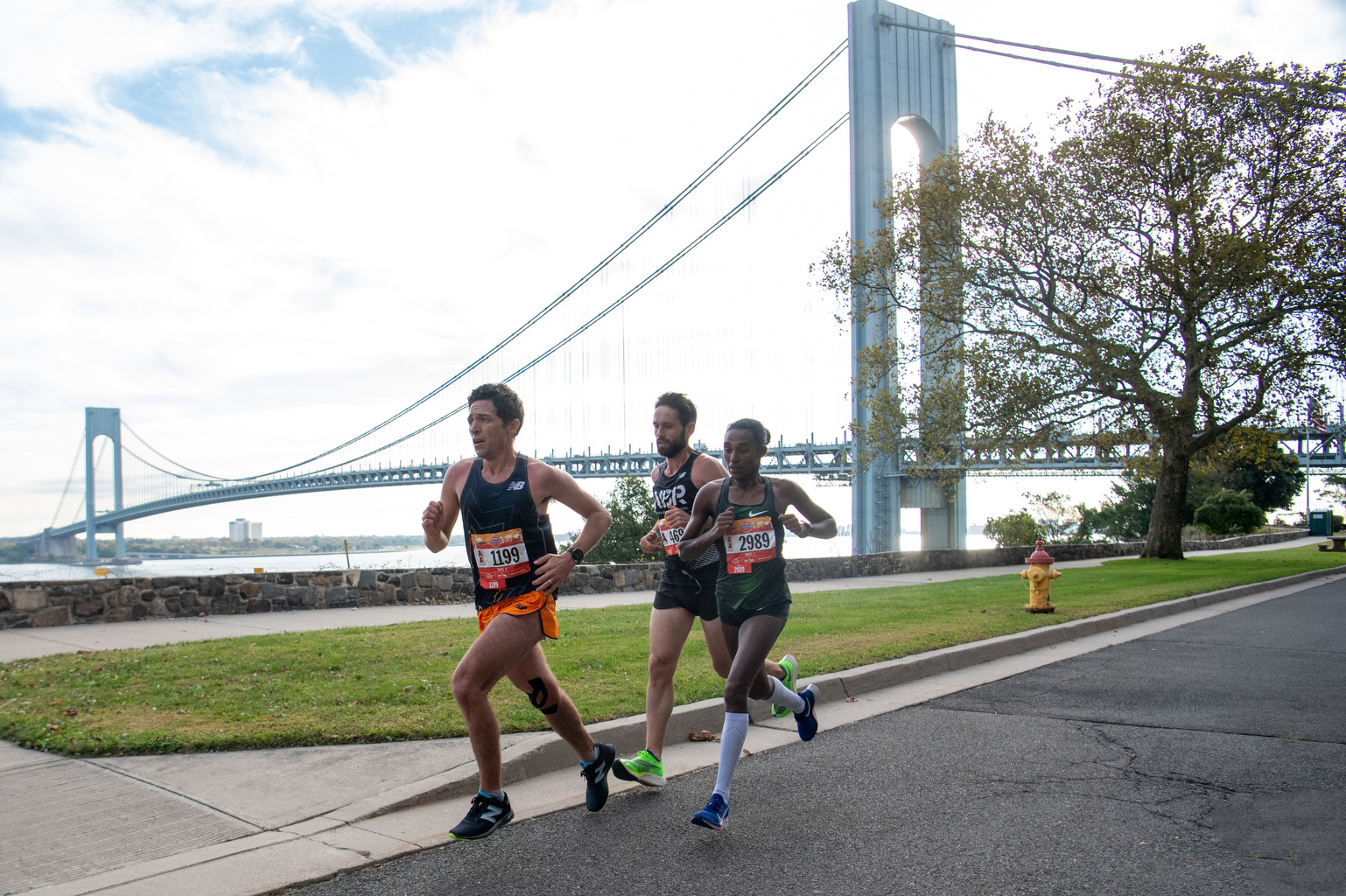

Featured
What Time Does The Verrazano Bridge Closed For Marathon
Modified: August 19, 2023
Featured: Find out what time the Verrazano Bridge closes for the marathon. Plan your race day accordingly and avoid any road closures.
Introduction
Welcome to New York City, the bustling metropolis that is home to the iconic Verrazano Bridge, a marvel of engineering and a key transportation artery connecting Staten Island and Brooklyn. The Verrazano Bridge not only serves as a vital link for residents and commuters, but also plays a significant role during one of the city’s most celebrated events – the New York City Marathon.
The New York City Marathon, often referred to as the world’s largest marathon, attracts thousands of athletes and spectators from around the globe. As runners traverse the 26.2-mile course through all five of New York City’s boroughs, the Verrazano Bridge serves as the starting point for this incredible feat of endurance.
With the magnitude of the event, it’s no surprise that the Verrazano Bridge must be temporarily closed to vehicular traffic during the marathon. This closure allows for the safety and security of the runners, as well as the smooth flow of the race.
In this article, we will delve into the details of the Verrazano Bridge closure for the marathon, exploring the factors that determine the closure time, the communication efforts made to inform the public, and the alternative routes and transportation options available during this temporary closure.
So, whether you’re a curious local, a marathon enthusiast, or a traveler planning to visit New York City during the marathon, read on to discover everything you need to know about when the Verrazano Bridge closes for this extraordinary event.
Overview of the Verrazano Bridge
The Verrazano Bridge, officially known as the Verrazano-Narrows Bridge, is a suspension bridge spanning the Narrows, a strait that connects the Atlantic Ocean to the Upper New York Bay. Named after the Italian explorer Giovanni da Verrazzano, the bridge was opened to traffic in 1964 and has since become an iconic landmark in the New York City skyline.
This magnificent bridge, with a total length of 4,260 feet, connects the boroughs of Staten Island and Brooklyn, providing a crucial transportation link for both commuters and commercial traffic. Its impressive span of 693 feet between the two towers makes it the longest suspension bridge in the United States and one of the longest in the world.
The Verrazano Bridge consists of two levels – an upper level for vehicular traffic and a lower level for rail and pedestrian use. The upper level accommodates four lanes in each direction, allowing for the smooth flow of cars, buses, and trucks. On the lower level, the bridge supports the Staten Island Railway, which connects Staten Island to the rest of the New York City subway system.
Offering breathtaking views of the New York Harbor, the Statue of Liberty, and the Manhattan skyline, the Verrazano Bridge is not just a critical transportation artery but also a popular tourist attraction. Runners in the New York City Marathon are treated to an exhilarating start as they make their way across this iconic bridge, setting the tone for the thrilling race ahead.
With its impressive engineering, stunning design, and strategic location, the Verrazano Bridge plays a pivotal role in New York City’s transportation infrastructure, connecting neighborhoods, facilitating trade, and serving as a symbol of unity between Staten Island and Brooklyn.
The New York City Marathon
The New York City Marathon is one of the most renowned and prestigious marathon races in the world. Held annually on the first Sunday of November, this iconic event attracts elite athletes, recreational runners, and enthusiastic spectators from all corners of the globe. Spanning a distance of 26.2 miles, the marathon takes participants through the five boroughs of New York City – Staten Island, Brooklyn, Queens, the Bronx, and Manhattan.
The origins of the New York City Marathon can be traced back to 1970 when just 55 runners participated in the race. Since then, it has grown exponentially, with over 50,000 runners crossing the starting line in recent years. The marathon showcases the diverse neighborhoods, iconic landmarks, and vibrant spirit of New York City, making it a truly unforgettable experience for both participants and spectators.
The race begins on Staten Island near the Verrazano Bridge, providing a dramatic and picturesque starting point for the runners. As they make their way through each borough, participants are cheered on by enthusiastic crowds, live music, and numerous aid stations providing hydration and support. The marathon culminates in Central Park, where the finish line awaits the triumphant runners.
Participating in the New York City Marathon is a remarkable achievement, representing countless hours of training, dedication, and perseverance. For runners, it is an opportunity to test their limits, achieve personal goals, and become part of a vibrant running community. The marathon also serves as a platform for raising funds and awareness for various charitable causes, making a positive impact on the lives of countless individuals and communities.
The New York City Marathon has become an integral part of the city’s identity, attracting visitors from near and far who come to witness the incredible display of athleticism, spirit, and determination. The marathon has also been the stage for noteworthy moments in running history, such as record-breaking performances, inspiring comebacks, and powerful displays of sportsmanship.
Whether you’re a participant or a spectator, the New York City Marathon is a celebration of human achievement, resilience, and the vibrant spirit of New York City. It is a testament to the power of community, as thousands of individuals come together to support and inspire one another on this unforgettable journey.
Bridge Closure for the Marathon
Considering the safety and logistics of organizing such an enormous event, it is necessary to temporarily close the Verrazano Bridge to vehicular traffic during the New York City Marathon. This closure allows for the seamless and secure flow of the marathon, ensuring the safety of both the runners and the spectators along the route.
The closure of the Verrazano Bridge begins early in the morning on the day of the marathon. The exact closing time is determined based on various factors, including the expected start time of the race, the number of participants, and the logistics of setting up the race course. Closing the bridge involves barricading the entrance ramps, deploying security personnel, and redirecting traffic to alternative routes.
During the closure, vehicles are not permitted to cross the bridge, and drivers must seek alternative routes to reach their destinations. This closure also affects commuters who rely on the bridge for daily travel between Staten Island and Brooklyn. It is important for residents and commuters to be aware of the closure and plan their travel accordingly on marathon day.
By temporarily closing the Verrazano Bridge, race organizers ensure the safety of the runners during the early stages of the marathon. The closure allows the participants to navigate the bridge without the presence of vehicles, reducing the risk of accidents or congestion on this critical part of the race route.
Additionally, closing the bridge allows for a more controlled and efficient flow of runners, ensuring a seamless start to the race and contributing to the overall success and organization of the New York City Marathon. This closure is a crucial aspect of the logistical planning that goes into such a monumental event.
While the closure of the Verrazano Bridge may inconvenience some commuters and residents, it is a necessary measure to facilitate the smooth running of the marathon and prioritize the safety and experience of the runners. The closure highlights the significance of the marathon as a major event in New York City and emphasizes the city’s commitment to promoting health, fitness, and community spirit.
In the next section, we will delve into how the closure time for the Verrazano Bridge during the New York City Marathon is determined, taking into consideration various factors such as start times, race logistics, and historical data.
Determining the Closure Time
The closure time for the Verrazano Bridge during the New York City Marathon is carefully determined to ensure the smooth operation of the race and minimize any disruptions to traffic flow. Several factors are taken into consideration when determining the closure time, including the expected start time of the race, the number of participants, and historical data from previous marathons.
One of the primary considerations in establishing the closure time is the anticipated start time of the marathon. The race traditionally begins in the early morning, with different waves of participants setting off at specific intervals. The closure of the Verrazano Bridge is scheduled to take effect well before the first wave of runners begins their journey across the bridge, allowing sufficient time for race logistics and participant preparations.
Another factor affecting the closure time is the number of participants in the marathon. As the New York City Marathon has grown in popularity over the years, the organizers must account for the increased volume of runners and the time it takes for everyone to cross the bridge and proceed along the course. The closure time is set to allow a gradual release of participants onto the bridge, minimizing congestion and ensuring a smooth flow of runners.
Previous marathon data is also a valuable tool in determining the closure time. Historical information, including the average time it takes for participants to reach the Verrazano Bridge and clear it, provides insights into the timing required for a successful closure. Race organizers analyze this data and make adjustments as needed to improve the efficiency of the closure process.
Other logistical considerations play a role in determining the closure time as well. These may include the time needed for setting up barriers and security measures, ensuring the safety of runners and spectators, and coordinating with law enforcement and transportation authorities.
Ultimately, the closure time for the Verrazano Bridge during the New York City Marathon is a well-planned decision based on a combination of factors. It aims to strike a balance between ensuring the safety and smooth flow of the race and minimizing the impact on commuters and residents who rely on the bridge for their daily journeys.
Next, we will explore the historical closure times for the Verrazano Bridge during previous New York City Marathons, providing a glimpse into how the closure time has evolved over the years.
Previous Marathon Closure Times
Over the years, the closure time for the Verrazano Bridge during the New York City Marathon has evolved to accommodate the growing number of participants and ensure the smooth flow of the race. Historical data provides insights into the typical closure times, offering a glimpse into the evolution of this iconic event. While the closure times may vary slightly from year to year, they generally adhere to a consistent schedule.
In the early years of the marathon, when the race had a smaller number of participants, the closure time for the Verrazano Bridge was relatively shorter. Runners would start crossing the bridge in waves, and the closure would be lifted once all runners had cleared the area. This allowed for a swift reopening of vehicular traffic and minimized the inconvenience for commuters.
As the popularity of the New York City Marathon grew, the closure times for the Verrazano Bridge underwent adjustments to ensure the safety and smooth flow of runners. Details such as the increased number of participants, enhanced security measures, and logistical considerations contributed to extending the closure period.
In recent years, the Verrazano Bridge closure typically occurs in the early morning hours, well before the official start of the race. Depending on the logistical preparations, the closure may be implemented up to several hours before the first wave of runners even reaches the bridge.
The closure duration can vary, but it generally spans several hours to allow for the safe and efficient passage of all participants across the bridge. This extended closure time enables organizers to stagger the release of runners onto the bridge, minimizing congestion and ensuring a more fluid race start.
Efforts are made to reopen the Verrazano Bridge as soon as the last runners have cleared the area, allowing for the resumption of vehicular traffic. The reopening time can vary based on factors such as the pace of the participants, any delays or incidents along the course, and the time it takes to clear the race infrastructure from the bridge.
While the Verrazano Bridge closure for the New York City Marathon may cause temporary inconveniences for commuters and residents, it is a necessary measure to ensure the safety and success of the event. It is a testament to the significance of the marathon and the iconic status of the bridge as a starting point for this extraordinary race.
Next, we will explore the factors that influence the closure time of the Verrazano Bridge during the New York City Marathon, taking into account the various considerations that race organizers must address.
Factors Affecting the Closure Time
The closure time for the Verrazano Bridge during the New York City Marathon is influenced by several key factors that race organizers carefully consider. These factors help ensure the safety of the runners and spectators, maintain the smooth flow of the race, and minimize disruptions to traffic. Understanding these factors provides insight into the decision-making process behind the closure time.
The anticipated start time of the marathon is a primary factor in determining the closure time. The race traditionally begins in the early morning hours, and the closure of the Verrazano Bridge is scheduled to take effect well before the first wave of runners reaches the bridge. This allows ample time for participants to gather and prepare for the race start, ensuring a seamless and organized beginning to the event.
The number of participants in the marathon is another crucial consideration. With tens of thousands of runners taking part in the New York City Marathon, organizers must account for the time it takes to release participants onto the bridge and ensure a smooth flow throughout the course. The closure time needs to allow for staggered start times and avoid overcrowding on the bridge, prioritizing the safety and overall experience of the runners.
Logistical considerations play a significant role in determining the closure time as well. Efforts must be made to set up security measures, marshal stations, hydration stations, and other logistical elements along the race course. These preparations take time and necessitate closing the bridge in advance to ensure that all necessary infrastructure is in place before the runners reach the Verrazano Bridge.
Another factor influencing the closure time is historical data and lessons learned from previous marathons. Organizers analyze data related to participants’ crossing times, congestion levels, and any challenges faced in previous races. This analysis helps fine-tune the closure time, aiming for an optimal balance between participant safety and minimizing disruptions to traffic.
External considerations, such as local events or public transportation schedules, also impact the closure time. Organizers must coordinate with various stakeholders and take into account any overlapping activities or scheduled transportation changes that may affect traffic flow. This ensures that the closure is aligned with the broader city-wide events and transportation plans.
The closure time of the Verrazano Bridge is a culmination of these factors and careful planning by race organizers. By considering the expected marathon start time, the number of participants, logistical preparations, historical data, and external considerations, the closure time is determined to create a safe, efficient, and enjoyable experience for all involved.
Next, we will explore the communication efforts and public notice surrounding the closure of the Verrazano Bridge during the New York City Marathon, ensuring that residents and commuters are well-informed about the temporary changes to their daily routines.
Communication and Public Notice
Effective communication and public notice are essential when it comes to the closure of the Verrazano Bridge for the New York City Marathon. Race organizers and local authorities make concerted efforts to ensure that residents, commuters, and visitors are well-informed about the temporary changes and disruptions to their daily routines.
Several channels are utilized to communicate the closure of the Verrazano Bridge. Public announcements are made through local news outlets, including print, television, and radio. This allows for widespread dissemination of information and ensures that residents and commuters receive timely updates about the closure and any alternative arrangements.
In addition to traditional media, race organizers leverage digital platforms to reach a broader audience. Social media channels, official marathon websites, and informational emails provide real-time updates on the closure and serve as a reliable source of information for those planning to traverse the bridge on marathon day.
Furthermore, signage and electronic message boards are strategically placed along major roadways leading to the bridge, informing drivers of the upcoming closure and redirecting them to alternative routes. This physical presence of information helps to reinforce the message and ensures that individuals are aware of the temporary changes to their travel plans.
The communication efforts extend beyond the closure itself. Race organizers collaborate with local authorities and transportation entities to provide comprehensive information about alternative routes and transportation options during the marathon. Detailed maps and instructions are available to guide drivers and pedestrians on the best routes to reach their destinations while avoiding the Verrazano Bridge.
Public notice is not limited to the local community. Travel agencies, hotels, and tour operators are also kept in the loop regarding the closure and are encouraged to inform their clients and guests about the necessary adjustments to travel plans. This ensures that tourists and visitors to the city are aware of the bridge closure and can plan their activities accordingly.
Efforts are also made to engage with the local community directly. Town hall meetings, community forums, and informational sessions are conducted to address concerns, answer questions, and provide an opportunity for residents to voice their opinions and suggestions. This collaborative approach fosters a sense of transparency and ensures that the public is actively involved in the decision-making process.
The communication and public notice surrounding the closure of the Verrazano Bridge aim to minimize confusion, inconvenience, and frustration among residents, commuters, and visitors. By providing comprehensive and timely information through various channels, race organizers and local authorities demonstrate their commitment to keeping the public well-informed and ensuring a smooth and successful marathon experience.
In the next section, we will explore the alternative routes and transportation options available to residents and commuters during the closure of the Verrazano Bridge for the New York City Marathon.
Alternate Routes and Transportation Options
During the closure of the Verrazano Bridge for the New York City Marathon, residents and commuters are provided with alternative routes and transportation options to navigate between Staten Island and Brooklyn. These arrangements aim to minimize disruptions and ensure that individuals can reach their destinations efficiently and conveniently.
One of the primary alternate routes for drivers is the Outerbridge Crossing. Located approximately 10 miles south of the Verrazano Bridge, the Outerbridge Crossing connects Staten Island to New Jersey. This bridge serves as a viable option for those traveling between Staten Island and points west, such as New Jersey and Pennsylvania. Signs and detour information guide drivers to the Outerbridge Crossing, reducing congestion and maintaining a steady flow of traffic.
For those relying on public transportation, the Staten Island Railway (SIR) is a reliable option during the bridge closure. The SIR provides train service between Staten Island and the rest of the New York City subway system. Commuters can access the SIR at various stations located in Staten Island, which connect them to the St. George Ferry Terminal. From there, passengers can take the Staten Island Ferry to Manhattan and transfer to other subway lines to reach Brooklyn or other boroughs.
In addition to the SIR, bus services operated by the Metropolitan Transportation Authority (MTA) offer alternative transportation options. MTA buses provide connections to various neighborhoods in Staten Island and Brooklyn, allowing individuals to reach their destinations without crossing the Verrazano Bridge. The MTA proactively adjusts bus routes and schedules to accommodate the bridge closure and ensure the smooth operation of public transportation services.
For pedestrians and cyclists, alternative paths are designated to safely navigate between Staten Island and Brooklyn. Temporary walkways and bike lanes are established on other nearby bridges, such as the Bayonne Bridge and the Goethals Bridge, providing a convenient and safe passage for those who prefer non-motorized modes of transportation.
It’s important for residents, commuters, and visitors to plan their travel in advance and familiarize themselves with the alternate routes and transportation options provided during the Verrazano Bridge closure. Understanding the available alternatives helps to minimize disruptions, ensure a smooth commute, and maintain the overall efficiency of the transportation system during the marathon.
Public transportation authorities, as well as local government entities, widely communicate these alternate routes and transportation options through various channels. They utilize signage, maps, online platforms, and information centers to ensure that individuals are well-informed and able to make informed decisions based on their specific travel needs.
By providing accessible and reliable alternative routes and transportation options, race organizers and local authorities demonstrate their commitment to minimizing the impacts of the Verrazano Bridge closure and facilitating efficient movement throughout the city during the New York City Marathon.
In the concluding section, we will summarize the key points discussed and reiterate the significance of the closure of the Verrazano Bridge for the marathon.
Conclusion
The closure of the Verrazano Bridge for the New York City Marathon is a temporary inconvenience that plays a crucial role in ensuring the safety, success, and smooth operation of this iconic event. The bridge closure allows for the seamless flow of runners, promotes participant safety, and minimizes disruptions to traffic.
Throughout this article, we have explored various aspects related to the closure, including the overview of the Verrazano Bridge as a vital transportation link, the significance of the New York City Marathon as a world-renowned event, and the factors that determine the closure time.
We have also delved into the historical closure times, the communication efforts made to inform the public, and the alternative routes and transportation options available during the closure. These measures are essential to ensure that residents, commuters, and visitors are well-informed and can navigate the city efficiently during the marathon.
The closure of the Verrazano Bridge is a testament to the city’s commitment to promoting health, fitness, and community spirit. It brings together thousands of individuals from all walks of life to participate in a remarkable display of endurance, resilience, and human achievement.
While the closure may cause temporary disruptions to daily routines, it is a necessary sacrifice to ensure the safety and success of the New York City Marathon. The bridge closure underscores the unity and collective effort of the city, as residents, runners, and officials come together to celebrate the spirit of the marathon and support the athletes who embark on this incredible journey.
As the city eagerly awaits each year’s marathon, the closure of the Verrazano Bridge serves as a reminder of the power of community, the strength of human determination, and the enduring legacy of this remarkable event.
So, whether you’re a participant, a spectator, or a resident, embrace the closure of the Verrazano Bridge and join in the celebration of the New York City Marathon – an event that showcases the very best of athleticism, camaraderie, and the vibrant spirit of New York City.
